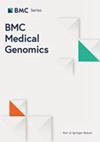通过线粒体损伤相关基因探索口腔鳞状细胞癌的预后情况
IF 2
4区 医学
Q3 GENETICS & HEREDITY
引用次数: 0
摘要
口腔鳞状细胞癌(OSCC)是最常见的口腔癌,由于其复发率高、存活率低,给医学界带来了巨大挑战。线粒体损伤相关基因(MDGs)与 OSCC 的发生、转移和进展密切相关。因此,我们根据 MDGs 构建了 OSCC 的预后模型,并确定了潜在的线粒体损伤相关生物标志物。基因表达谱和相关临床信息来自癌症基因组图谱(TCGA)数据库。通过差异分析确定了与 OSCC 相关的 MDGs。采用COX分析筛选出七种与预后相关的MDGs,并建立了OSCC的预后预测模型。根据最佳风险评分阈值将病例分为低风险组和高危组。Kaplan-Meier (KM) 分析显示生存率差异显著(P < 0.05)。此外,患者 1 年、3 年和 5 年生存率的 ROC 曲线下面积(AUC)分别为 0.687、0.704 和 0.70,表明该预后模型具有较高的长期预测准确性。为提高预测准确性,将年龄、性别、风险评分和 TN 分期纳入提名图,并使用校准曲线进行验证。基于 MDGs 的风险评分被确定为潜在的独立预后生物标志物。此外,BID和SLC25A20被确定为两个潜在的独立线粒体损伤相关预后生物标志物,为OSCC提供了新的治疗靶点。本文章由计算机程序翻译,如有差异,请以英文原文为准。
Exploring the prognostic landscape of oral squamous cell carcinoma through mitochondrial damage-related genes
Oral squamous cell carcinoma (OSCC), the most prevalent form of oral cancer, poses significant challenges to the medical community due to its high recurrence rate and low survival rate. Mitochondrial Damage-Related Genes (MDGs) have been closely associated with the occurrence, metastasis, and progression of OSCC. Consequently, we constructed a prognostic model for OSCC based on MDGs and identified potential mitochondrial damage-related biomarkers. Gene expression profiles and relevant clinical information were obtained from The Cancer Genome Atlas (TCGA) database. Differential analysis was conducted to identify MDGs associated with OSCC. COX analysis was employed to screen seven prognosis-related MDGs and build a prognostic prediction model for OSCC. Cases were categorized into low-risk or high-risk groups based on the optimal risk score threshold. Kaplan-Meier (KM) analysis revealed significant survival differences (P < 0.05). Additionally, the area under the ROC curve (AUC) for patient survival at 1 year, 3 years, and 5 years were 0.687, 0.704, and 0.70, respectively, indicating a high long-term predictive accuracy of the prognostic model. To enhance predictive accuracy, age, gender, risk score, and TN staging were incorporated into a nomogram and verified using calibration curves. Risk scoring based on MDGs was identified as a potential independent prognostic biomarker. Furthermore, BID and SLC25A20 were identified as two potential independent mitochondrial damage-related prognostic biomarkers, offering new therapeutic targets for OSCC.
求助全文
通过发布文献求助,成功后即可免费获取论文全文。
去求助
来源期刊

BMC Medical Genomics
医学-遗传学
CiteScore
3.90
自引率
0.00%
发文量
243
审稿时长
3.5 months
期刊介绍:
BMC Medical Genomics is an open access journal publishing original peer-reviewed research articles in all aspects of functional genomics, genome structure, genome-scale population genetics, epigenomics, proteomics, systems analysis, and pharmacogenomics in relation to human health and disease.
 求助内容:
求助内容: 应助结果提醒方式:
应助结果提醒方式:


